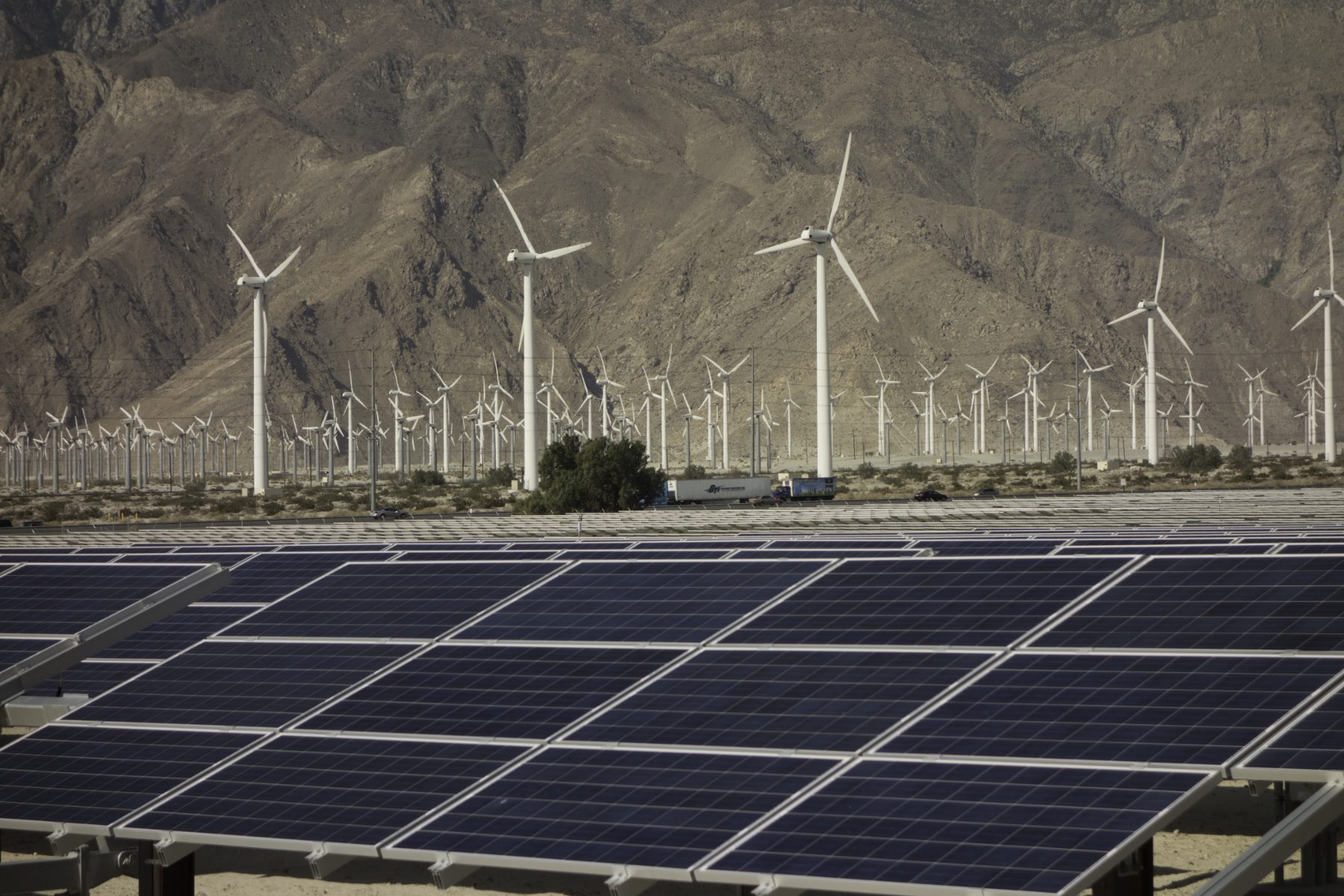Congress is poised to pass the Inflation Reduction Act, which includes $369 billion for climate action — what experts are calling the largest investment to combat climate change in U.S. history. It passed the Senate on Sunday and is expected to go to a vote in the House later this week.
While it still falls short of the $500 billion Democrats were initially seeking for climate action, and includes some giveaways for fossil fuel companies, climate activists on the whole see it as a positive step. It’s expected to cut greenhouse gas emissions by 40 percent by 2030, through tax credits that incentivize solar and wind manufacturing and the production of electric cars, among other provisions.
The influx of funding to combat climate change will add to the $1 trillion from the Bipartisan Infrastructure Law passed in November, which laid the groundwork for a clean energy transition through investments in the national grid, clean buses for schools, electric vehicle chargers, access to clean drinking water and public transit. Combined, the two pieces of legislation are predicted to create millions of jobs, many in the trades — for electricians and construction workers — and in the automotive and transportation industries.
But without recruitment work and industry overhaul, most of those jobs will likely go to men.
According to the latest numbers released by the U.S. Department of Energy, women make up just 25 percent of the energy industry workforce, and when you drill down to where a lot of the job creation will come from in a clean energy transition and in infrastructure upgrades, the numbers look even more bleak. For example, women make up just 4 percent of the construction workforce.
This is also where the opportunity lies to bring women — particularly women of color, who are disproportionately represented in low-paying jobs — into industries where wages can sustain a family, and where the educational barrier to entry can be low, said Marina Zhavoronkova, a senior fellow for workforce development at the left-leaning Center for American Progress.
“What we see is that many jobs that have a low formal barrier to entry that disproportionately employ women are much lower paid then ones that disproportionately employ men,” she said.
Women made up 95 percent of child care workers, an industry that lost jobs during the pandemic, and pays a median hourly wage of around $13. In comparison, men make up 98 percent of electricians, another job that doesn’t require a college degree, which pays a median wage of $28.87 an hour.
“We have to sort of change that trajectory,” Zhavoronkova said. “And clean energy is a really great area to look at this work because one of the greatest levers is that there is a lot of government money that goes into it.”
That investment should go to provide equal opportunity for women of color, who are more often the primary breadwinners for families, Zhavoronkova said. “There’s just like a moral obligation part of it, right? Like, you are spending government dollars, and we’re doing it in an industry that has a really strong moral imperative in general in addressing the climate crisis, and so you want to do that in a way that creates equitable opportunities.”
Working in a clean energy economy also has the potential to make the trades more appealing to women, said Ariane Hegewisch, program director of employment and earnings at the Institute for Women’s Policy Research, who has studied the role gender can play in the green economy.
“Environment and clean energy, those types of themes are very interesting to women. It is something that motivates, given that if you work in something like construction, to be able to see yourself in those jobs takes quite a bit of effort with so few women around,” she said. “We know generally, that the environmental, clean energy and, more broadly, socially responsible projects often attract women to occupations, including young women, to get involved in STEM jobs.”
And while she called it “quite a steep hill” to bring more women into the clean energy transition, she feels optimistic about the current administration and its efforts to address gender inequality.
“We have an administration that is really keen on ensuring that women from diverse backgrounds get access to these good jobs and are understanding the issues,” she said. “Some of them are willing to put the enforcement and energy and creativity behind ensuring that we don’t just say that those jobs also go to women, including women of color, but help make this happen.”
There is reason to be optimistic: In 2021, women’s participation in the trades reached its highest level ever according to the Institute for Women’s Policy Research at over 314,000.
Wendy Chun-Hoon, the director of the Women’s Bureau, has been focused on spreading the message that the trades can be a career option for women. “I am trying to bring as much visibility as possible to the women who are in the trades or aspire to be in the trades at a time when this will be a big, big part of job creation,” she said.
The Women’s Bureau doles out funding for a grant called the Women in Apprenticeship and Nontraditional Occupations program, for pre-apprenticeship programs for women and for developing support groups and networks to improve retention for women in an industry where discrimination and harassment is an issue. However, the program is tiny compared with the need. Last year it gave out less than $4 million.
Other government agencies like the Department of Transportation can also play a role, said Hegewisch. “Take the electric vehicle charging stations that are going to be built. And, I think the goal is for those to be licensed electricians, and those electricians need to do extra training to be able to do that. … Quite a few of them will be in the union sector.”
The problem is less than 2 percent of electricians are women.
The government is giving preference to contractors for infrastructure work who are working on workplace equity, Zhavoronkova said. “What we see in some of these notices of funding that have gone out is that they do care and prioritize applicants who are considering the working conditions and composition of the workforce,” she said. “What that can look like is a preference for applicants who implement workforce development, predominantly serving workers who are traditionally underrepresented in a job.”
Despite these promising signs, there is one glaring problem for women seeking to enter this new economy: neither of these federal investments included money for the care industry. The original Build Back Better legislation had included $400 billion for care work, but that did not carry into the Inflation Reduction Act.
This funding would not only have helped women, who predominantly work in the care industry, earn better wages, but also would have helped women who want to enter the clean energy workforce and need child care to do so. And due to disasters caused by climate change, care workers are increasingly finding themselves serving as first responders, making them an important workforce for adapting to the climate crisis.
Rhiana Gunn-Wright, one of the original creators of the Green New Deal and climate policy director at the Roosevelt Institute, who has since written about the intersection of care and climate work, says neglecting that aspect of an energy transition is a missed opportunity.
“The shape of the clean energy economy and the shape of our larger economy when we transition to clean energy is very much up for grabs,” she said. “There are ways that it can develop that give more power to marginalized people and there is another way it can shape up … where clean energy largely employs men and White men.”
Right now, she says, we are headed to that second version of a transition. “There is no attention to child care and the role that care plays in supporting [the transition] as part of climate work,” she said.
“Without that kind of support it is very difficult for people who are not men to enter the industry.”
She hopes eventually that care work could be seen as part of the clean energy economy, not a separate priority. “A green economy is both about the types of energy that we exist on, but also moving on to a less carbon-intensive way of life in general,” she said. “That includes what kind of jobs we invest in.”







